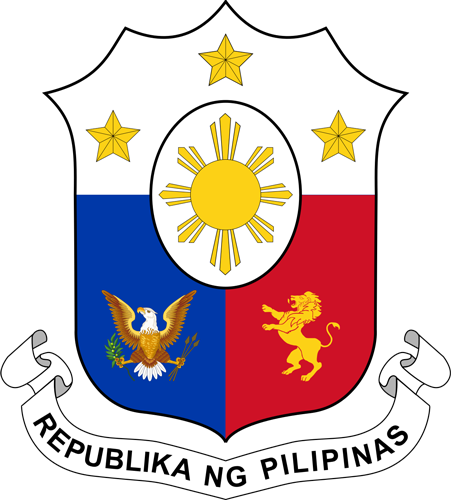History book narrates cultural significance of dogs in the Philippines
We may be familiar with the words “man’s best friend”, a title bestowed to dogs, which we may commonly encounter through Western media. That title, however, holds ever true for Philippine dogs as well— asu, kitu, atu in some of the local languages, specifically in Cagayan Valley.
The story of this closeness between the Filipino and the dog was immortalized and beautifully narrated in the recently published book, Dogs and Philippine History— the result of years of research by its author, historian Ian Alfonso.
Dogs in Philippine History talks about the origin of our very own Philippine dog, more commonly known as aspin (from "asong Pinoy", the term advocated in place of the old “asong kalye” moniker). It also talks about the dog’s place in Philippine history, from the pre-colonial era to the Spanish and American periods. It also highlights the dog’s crucial significance in local culture, from their contribution to socio-economy to their role in symbolism, art, and identity.
Alfonso, who works for the National Historical Commission of the Philippines, has managed to ceremonially launch his masterpiece nationwide, the province of Cagayan included. The book’s public unveiling in Tuguegarao City was made possible through a collaboration with the local cultural heritage sector led by the Cagayan Museum and Historical Research Center and the Cagayan Heritage Conservation Society.
The launch in Tuguegarao was apt and can be considered as a completion of a full circle, since the city was actually featured in the said book.
Tuguegarao was specifically portrayed as being the same with the rest of the country— the people of the city and the entire Cagayan Valley culturally hold the dog in high regard. Testaments of this esteem can be observed from the dog monument in Barangay Atulayan Sur, and the dog motifs in the bas reliefs of the St. Peter’s Cathedral, both of which are in Tuguegarao City.

Perhaps, however, the importance of the dog among the natives of Cagayan can be best understood if historical records and archaeological findings are to be considered.

According to archaeology, dogs were brought to the Philippines by the first Austronesian settlers, of whom most native Filipinos descend from. This is evident from the remains of dogs discovered in former neolithic Austronesian settlements uncovered in the province of Cagayan, which are a few thousand years old. This implies that the ancestors of the aspin were already domesticated prior to their arrival in the islands, in the age of prehistory.
During the time when native Cagayanos like the Ibanag came to be, the dog was a central aspect of life, especially when it comes to subsistence— dogs were used for hunting. Historical dictionaries define the Ibanag term, anu, as “hunting with dogs”. It is analogous to the vocabulary of other Philippine ethnic groups such as pangangaso in Tagalog, and pangangayam in Bisaya, both of which are derived from the root word for dog— aso and ayam respectively.
Beyond hunting, Alfonso explained during his Tuguegarao book launch, that most colonial Spanish dictionaries that feature Philippine languages portray the dog’s cultural significance across the country, through extensive dog-related vocabularies.
Among the Ibanag people, the archaic term, guram, which specifically refers to a dog that has black fur, and gari’, or having mixed patches of fur color among dogs, are examples of terminologies that imply the dog’s historical significance.
In general, Alfonso underscored the dog’s importance to the lives of Filipinos by also invalidating the myth that dog-eating was a central native custom. Contrary to what many may believe, the eating of dog meat was originally a rare practice, as dogs were actually prized hunting partners aside from being guardians and pets. The eating of dog meat was a later exoticization, with the cooked dish being dubbed colloquially as “asusena”, a play on the words aso (dog), cena (dinner), and the azucena flower, for the lack of an actual indigenous term. According to Alfonso, even the ethnic groups of the Cordillera, who are known to have a dog-eating tradition, only slaughter dogs for food extraordinarily and ritualistically, and not so much for normal or daily consumption.
The taboo of dog-eating, which stems from native culture and pre-colonial history, coincides with animal welfare laws in place in the country today. The slaughtering and consumption of dog meat as an actually illegal practice in the Philippines, can be considered as a reconnection to the Filipino’s indigenous culture, worldviews, and identity.
Aside from its contribution to the gradual extinction of rabies in the country, the avoidance and shunning of dog-eating reiterates the Philippine ancestral reverence for dogs as pets, family members, helpers, and perhaps, friends.
Dogs have accompanied the people of the Philippines, from their prehistoric journey from mainland Asia to the archipelago, to their development from scattered ethnicities into a nation. The dog remains at the Filipino’s side in the modern period, and perhaps, it will continue to be the Filipino’s best friend for ages to come. (JKC/PIA-2/cover image by Derrick Macutay)




